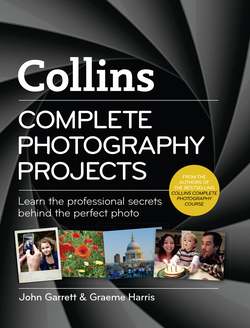Читать книгу Collins Complete Photography Projects - John Garrett - Страница 42
COMPOSITION
ОглавлениеThe basics of photography aren’t just a matter of getting to grips with your equipment; you also need to understand the aesthetic values that will turn your photographs into something much more than everyday snaps.
When you admire a photograph or painting you may at first believe that it is the subject matter that is appealing to you. In fact, once you understand the dynamics of the picture’s composition, you will know that you are being influenced just as much by that.
The early photographers were mostly painters experimenting with this new technology, so they continued to use painterly laws of composition such as dividing the picture plane into thirds and placing focal points where the thirds intersect (see here). However, the development of wide-angle and telephoto lenses changed photographic composition forever. Although classic composition still formed the basics, photographers could now play with perspective and manipulate colours optically.
The basic compositional possibilities shown here will be demonstrated time and again throughout the book. Composition is the way that photographers look at the world. It is our style. It is how we recognize a photograph by one of our favourite photographers – we know how he or she sees the world.
RECORD SHOT
This picture, taken at an art fair, is what I saw when I first walked by. It’s taken as a record of the place without thinking of the content at all. 1/180 second at f4.1, 6.5mm compact camera, 400 ISO. GH
CHANGING THE FORMAT
Taking a closer viewpoint and using a vertical format has allowed me to exclude most of the unwanted detail. However, the picture still looks distant and unconnected with the subject. 1/125 second at f4.3, 15.6mm compact camera, 400 ISO. GH
LOW-ANGLE CLOSE-UP
By moving closer still and coming down to a low angle I have isolated the potter and I can see his technique. The relationship of the round pot and his head holds the picture together. 1/125 second at f4.3, 15.6mm compact camera, 400 ISO. GH
RULE OF THIRDS
A classic rule of composition is that for a strong visual impact, the focal point of a picture should be near an imaginary intersection of two lines that divide the picture into thirds horizontally and vertically.
FINDING A FOCAL POINT
Most landscapes are greatly improved by the inclusion of a focal point. Here I found a white farmhouse to give the viewer a point to fix on and to form a story about the farmer and his land. 1/500 second at f6.7, 200mm, 400 ISO. GH
HIGH VIEWPOINT
Most pictures are shot at eye level – the photographer just stands there and takes the picture. Varying the camera height gives a different view of the world. In this case I was able to walk up some stairs and join the man reading his newspaper. 1/500 second at f5.6, 200mm, 200 ISO. GH
USING PERSPECTIVE
Perspective is one of the most important compositional tools for the photographer, and our huge range of focal lengths allows us to play with this for graphic effect. In this picture of sailors calling home the wide-angle 24mm lens has exaggerated the perspective, making a nice graphic shape. 1/30 second at f8, 24mm, 100 ISO film. JG
LOW VIEWPOINT
I dropped down to a low camera angle so that I could look up at the heavy metal fans, separating them from the rest of the crowd and making the sky their background. With the help of an 18mm wide-angle lens I was also able to really emphasize the rock and roll gesture. 1/1000 second at f8, 18mm, 400 ISO. JG
